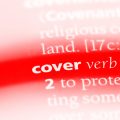1. Understanding Car Insurance Deductibles
When you buy car insurance in the United States, one important thing youll notice is the “deductible.” A deductible is the amount of money you agree to pay out-of-pocket before your insurance company covers the rest of a claim. This applies to both collision and comprehensive car insurance policies.
What Is a Deductible?
Think of a deductible as your share of the responsibility if something happens to your car. For example, if you have a $500 deductible and your car suffers $2,000 worth of damage, you would pay the first $500, and your insurer would cover the remaining $1,500.
Why Deductibles Matter
Deductibles are a key part of how car insurance works. They help determine how much you pay for coverage each month (your premium) and what you will pay when you file a claim. Here’s why deductibles matter:
- Lower Deductible = Higher Premium: If you choose a low deductible, your monthly premium will usually be higher.
- Higher Deductible = Lower Premium: If you pick a higher deductible, your premium will typically be lower, but youll pay more out-of-pocket if you need to make a claim.
Deductible Examples
| Deductible Amount | Your Monthly Premium | Your Out-of-Pocket Cost per Claim |
|---|---|---|
| $250 | Higher | $250 |
| $500 | Average | $500 |
| $1,000 | Lower | $1,000 |
This table shows how choosing different deductible amounts affects both what you pay every month and what you’d owe if you file a claim. Picking the right deductible is all about balancing your budget and comfort with risk.
Collision vs. Comprehensive Coverage
When it comes to car insurance, collision and comprehensive coverage are two main types that often get confused. Understanding the difference between them—and how deductibles work for each—can help you make smart decisions when choosing your policy.
What is Collision Coverage?
Collision coverage helps pay for damage to your car if you hit another vehicle or an object, like a tree or a guardrail. It doesn’t matter who’s at fault; if your car is damaged in a crash, this part of your insurance kicks in after you pay your deductible.
Example:
If you back into a pole and dent your bumper, collision coverage will help cover the repair costs after you pay your deductible amount.
What is Comprehensive Coverage?
Comprehensive coverage protects your car from things other than collisions. This includes theft, vandalism, fire, natural disasters, or even hitting an animal. Like collision coverage, you’ll need to pay a deductible before your insurer covers the rest of the damages.
Example:
If a hailstorm dents your hood or someone steals your car, comprehensive coverage helps with repair or replacement costs once you’ve paid your deductible.
Key Differences Between Collision and Comprehensive
| Collision Coverage | Comprehensive Coverage | |
|---|---|---|
| What it covers | Accidents with other cars or objects | Theft, vandalism, weather events, animals |
| Deductible applies? | Yes | Yes |
| Required by lenders? | Usually required if you have a loan or lease | Usually required if you have a loan or lease |
| Who’s at fault? | Covers regardless of fault | N/A (not related to accidents) |
How Deductibles Work for Each Type
You can choose different deductible amounts for collision and comprehensive coverage. For example, you might pick a $500 deductible for collision and a $250 deductible for comprehensive. If you file a claim under either type, you pay the specific deductible first—then your insurance covers the rest up to the policy limits.
Quick Tip:
A higher deductible usually means lower monthly premiums but more out-of-pocket costs when you file a claim. Choosing the right deductible depends on what works best for your budget and risk comfort level.

3. How Deductibles Affect Your Premiums
Understanding how deductibles impact your car insurance premiums can help you choose the best coverage for your budget and needs. With collision and comprehensive car insurance, the deductible is the amount you agree to pay out of pocket before your insurance kicks in to cover a claim. The size of your deductible plays a big role in how much you pay for your monthly or annual premiums.
What Is the Relationship Between Deductibles and Premiums?
Generally, there’s a trade-off between your deductible and your premium:
- Higher Deductible = Lower Premium: If you choose a higher deductible, your insurance company sees you as less likely to file small claims. That means they charge you less each month or year.
- Lower Deductible = Higher Premium: If you pick a lower deductible, your insurer takes on more risk since they’ll have to pay out more if something happens. So, your premium will be higher.
Sample Deductible and Premium Comparison
| Deductible Amount | Estimated Monthly Premium | Estimated Annual Premium |
|---|---|---|
| $250 | $110 | $1,320 |
| $500 | $90 | $1,080 |
| $1,000 | $75 | $900 |
| $1,500 | $65 | $780 |
Why Does This Matter?
If you rarely make claims and want to save on premiums, a higher deductible might make sense. On the other hand, if paying a high out-of-pocket cost after an accident would be tough for you, choosing a lower deductible could offer peace of mind even though it means paying more each month.
4. Filing a Claim: Step-by-Step Deductible Process
Understanding the Claims Process for Collision and Comprehensive Insurance
When you get into an accident or experience damage to your car, knowing how deductibles work during the claims process is essential. Here’s a simple, step-by-step guide to help you navigate filing a claim with either collision or comprehensive coverage, using real-life scenarios to make things clear.
Step-by-Step Walkthrough
- Incident Occurs: Something happens to your car—maybe a fender bender (collision) or your windshield is cracked by hail (comprehensive).
- Assess Damage: Check the extent of the damage and decide if it’s worth filing a claim based on your deductible amount.
- Contact Your Insurance Company: Call or go online to report the incident. Share details like the date, time, photos, and any police reports if needed.
- Review Your Policy: The insurance adjuster will confirm your coverage type and deductible amount.
- Damage Inspection: An adjuster may inspect your vehicle or ask you to submit photos for review.
- Estimate & Repair Shop: You’ll receive a repair estimate. Choose a repair shop—some insurers have preferred partners for quicker service.
- Payout Minus Deductible: Your insurer pays for covered repairs minus your deductible. For example, if repairs cost $2,000 and your deductible is $500, insurance pays $1,500—you pay $500 out of pocket.
Real-Life Deductible Scenarios
| Scenario | Type of Coverage | Total Damage Cost | Your Deductible | Insurance Pays | You Pay |
|---|---|---|---|---|---|
| You back into a pole in a parking lot | Collision | $1,200 | $500 | $700 | $500 |
| Your car is vandalized overnight | Comprehensive | $2,000 | $1,000 | $1,000 | $1,000 |
| A tree branch breaks your windshield during a storm | Comprehensive | $600 | $250 | $350 | $250 |
| You hit another car and cause major damage to your vehicle only | Collision | $3,500 | $1,000 | $2,500 | $1,000 |
Tips for Filing a Smooth Claim Involving Deductibles
- Keep records: Save all receipts and documentation related to the incident and repairs.
- Know your policy: Be aware of your deductible amount before you file so there are no surprises.
- Ask questions: If anything is unclear about what you owe or what’s covered, ask your insurance rep directly.
5. Tips for Choosing the Right Deductible
Factors to Consider When Selecting Your Deductible Amount
Choosing the right deductible for your collision and comprehensive car insurance is a big decision. The deductible is the amount you pay out of pocket before your insurance kicks in after a covered claim. Here are some important factors to help you decide what works best for you:
Your Monthly Budget
If you pick a higher deductible, your monthly premium (the amount you pay for insurance each month) will usually be lower. On the other hand, a lower deductible means higher monthly payments but less out-of-pocket cost if you have an accident or damage.
| Deductible Amount | Monthly Premium | Out-of-Pocket Cost Per Claim |
|---|---|---|
| $250 | High | Low |
| $500 | Medium | Medium |
| $1,000 | Low | High |
Your Emergency Fund
If you have savings set aside for emergencies, you might feel comfortable choosing a higher deductible, since you could cover that cost if something happens. If not, it might be safer to choose a lower deductible even if it means paying more each month.
The Value of Your Car
If your car is older or not worth much, consider whether it’s worth paying for low deductibles and higher premiums. Sometimes, people with older cars opt for higher deductibles or even drop comprehensive or collision coverage altogether.
Your Driving Habits and Risk Level
If you drive often, commute long distances, or live in an area with high rates of accidents or thefts, you may want to pick a lower deductible for extra peace of mind. If you rarely drive or park in a safe place, a higher deductible could make sense.
How to Balance Cost and Coverage Based on Your Circumstances
Here’s how you can find the right balance between cost and coverage:
- Estimate Your Financial Comfort Zone: Think about how much you can afford to pay out-of-pocket in case of an accident versus what fits into your monthly budget.
- Compare Premiums: Ask your insurer for quotes at different deductible levels to see how much each option changes your monthly payment.
- Consider Your Risk: Are you a careful driver? Do you park in secure places? Lower risk might mean it’s okay to go with a higher deductible.
- Review Annually: Life changes! Review your policy each year as your financial situation and car value change.
Selecting the right deductible is all about knowing what works best for your lifestyle and budget. Take your time and don’t be afraid to ask your insurance agent questions—they’re there to help!

